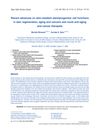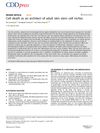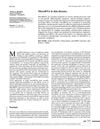Inducible cre-mediated N-ras activation and PTEN inactivation in transgenic mouse melanocytes requires keratinocyte hyperplasia to elicit a melanocyte pathology
January 2005
in “
Enlighten: Publications (The University of Glasgow)
”
TLDR Melanocyte pathology requires keratinocyte hyperplasia and regulation dysfunction.
The study investigated melanoma development using transgenic mouse models with inducible N-ras activation and PTEN inactivation. Initial attempts to induce melanocyte pathology through RU486 treatment were unsuccessful, as N-ras activation alone did not lead to melanocyte hyperplasia. However, when a keratin K14-based regulator was introduced to induce PTEN-mediated keratinocyte hyperplasia, compound mice developed cutaneous lesions after 5 months of treatment. These lesions were papillomas with melanocytes confined to the basement membrane. The findings suggested that melanocyte hyperplasia required prior keratinocyte hyperplasia and regulation dysfunction, leading to epidermal/dermal junctional pathology. The study highlighted the potential role of keratinocyte mutation in early melanoma development, supporting the idea that melanocyte escape from keratinocyte control is necessary for melanoma progression.



